 |
 |
 |
 |
 |
 |
 |
 |
 |
 |
 |
 |
 |
 |
 |
 |
 |
 |
 |
 |
 |
 |
 |
 |
 |
 |
 |
 |
 |
 |
|
|
|
|
|
|
|
|
|
|
|
|
|
|
|
|
|
|
|
|
|
|
|
|
|
|
|
|
|
|
|
|
|
|
|
|
FORTNIGHTLY BOATSHOP PHOTO LOG
|
|
|
|
|
|
|
|
 |
|
|
|
|
|
|
|
|
|
|
|
|
|
Issue Number One Hundred Fifteen
|
|
|
|
|
|
|
|
|
|
|
|
|
|
|
|
|
|
|
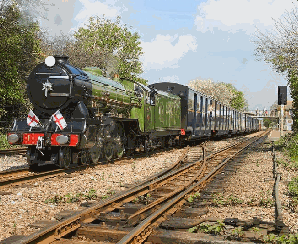 |
|
|
|
|
|
|
|
The Romney Hythe and Dymchurch
Light Railway
(RH&DR) runs for almost 14 miles along the coast of Kent in the
South East of England between Hythe (10 miles south of the port of
Dover) to Dungeness. En route from Hythe (Terminus) the line has
stations at Dymchurch, a quaint English seaside resort; St. Mary's Bay;
Romney, the head quarters containing the engineering workshops,
locomotive shed, carriage sidings, offices, paint shops, coach works
and track works depot; Romney Sands, where there is close access to the
beach; and finally to Dungeness where, rather than there being a
turntable, the line tracks a huge mile long loop. In fact, this means a
train can run for almost 28 miles non-stop. The line was built between
1925 and 1927, initially between New Romney and Hythe only, extended to
Dungeness in 1928.
|
|
|
|
|
|
|
|
|
|
|
|
|
|
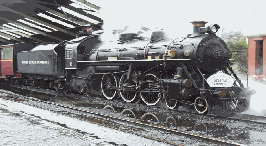 |
|
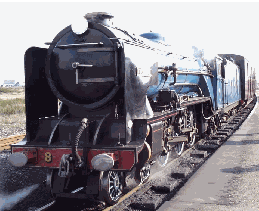 |
|
|
|
|
|
|
|
|
|
|
|
|
|
|
|
|
|
|
|
The track is 15 inch gauge, often referred to as the 'minimum
gauge' as it was recognised as being the smallest gauge of railway you
can run genuine passenger/commuter services. It is still used as
a commuter service, taking the local school children to and from
Southland's School in New Romney. It has a fleet of 10 steam
locomotives and 2 mainline diesels and almost 60 individual carriages.
It is hard
to point to when the locomotives first carried Penberthy injectors, but in the 1950s the boilers
of the (then) 9 mainline locos were replaced with new superheated
boilers (they were saturated steam only up to that point).
Immediately the improvement in water consumption led the railway to fit
one 3/8" and one ½" injectors to all engines, as opposed to two ½"
injectors. Fitted to each side of the engine they are positioned
just outside and below the cab of the loco and are just visible through
a site-hole in the fall-plate between the loco itself and the tender,
enabling the driver to view the water overflow.
|
|
|
|
|
|
|
|
|
|
|
|
|
|
|
|
|
Trains can be as long as 18 20-seat coaches in the height of the summer, around
300 passengers, so easy and efficient operation of the locomotive is
essential. There can be nothing more frustrating for a driver than a
poor working injector. Not only does it take the concentration of the
driver away from watching the road, coal firing the boiler etc. (all
done by the one man) but, if it is constantly dribbling, will waste
much needed water to the floor rather than into the boiler
|
|
|
|
|
|
|
|
|
|
|
|
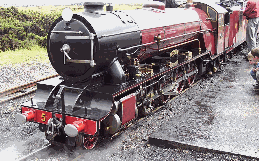 |
|
|
|
|
|
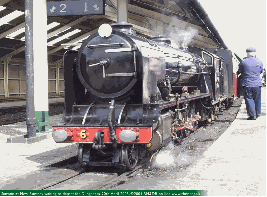 |
|
|
|
|
|
|
|
|
|
|
. For many years the RH&DR would scramble to a small cupboard of odd and old
spare parts to rectify faulty injectors. Often the parts were there
because they weren't working in the first place! Due to the ergonomics
of the locomotive the most suitable style of injector for the left hand
side (where the driver sits and therefore where fitting of the more
often used 3/8" injector is preferred) is the special model.
Replacement units and parts is paramount, which is why we have been
glad that Walter (Beckmann) through his shop has been able to help
supply us with the parts we need.
Jon Emmins, 2006 (Edited to fit space available)
|
|
|
|
|
|
|
|
|
|
|
|
|
|
|
The 3/8" injectors almost perfectly
balance the water
consumption and boiler increases on a journey along the line, which
takes just over an hour stopping at all stops between Hythe and
Dungeness. In fact it will slightly increase the boiler water
level on a standard train that doesn't require too much power.
With good firing it can be necessary at times of coasting to use the ½"
injector to prevent the boiler from blowing-off at the safety valves.
|
|
|
|
|
|
|
|
|
|
|
|
|
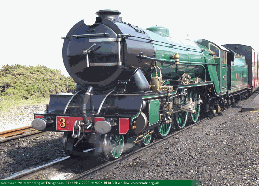 |
|
|
|
|
|
|
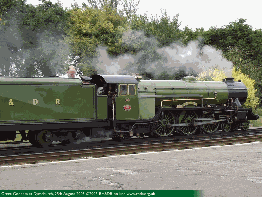 |
|
|
|
|
|
|
|
|
|
|
|
|
|
|
 |
|
|
|
|







